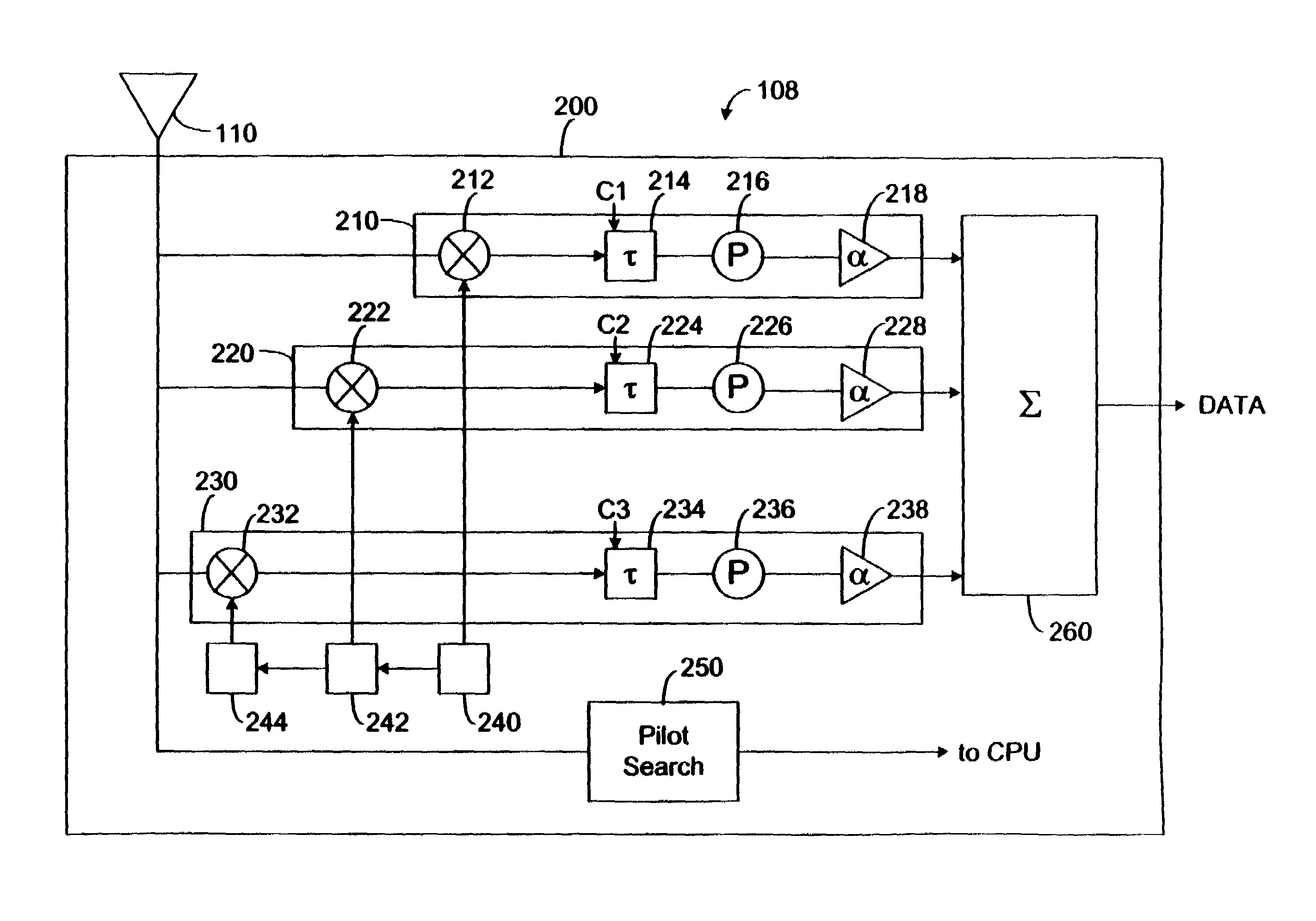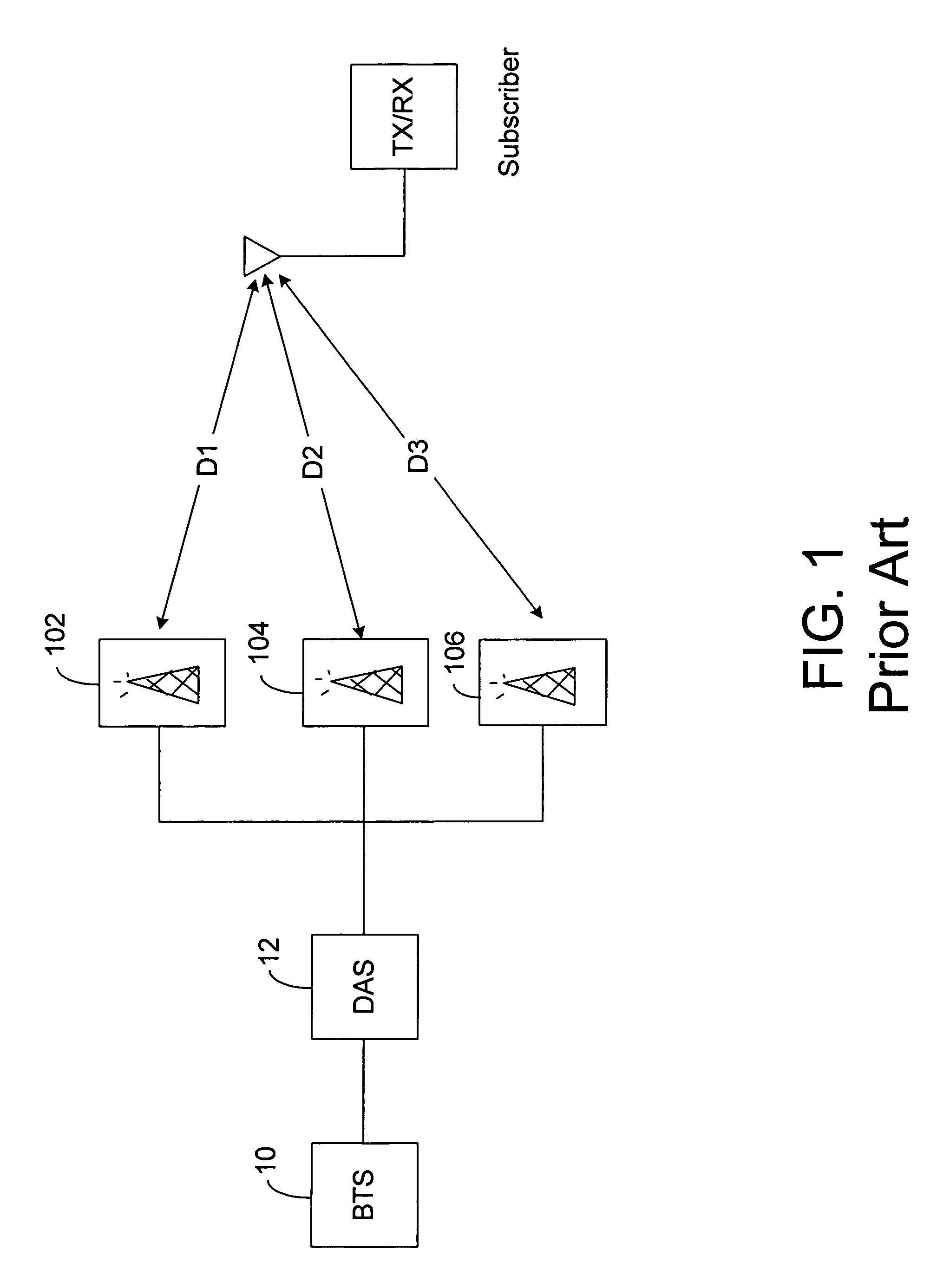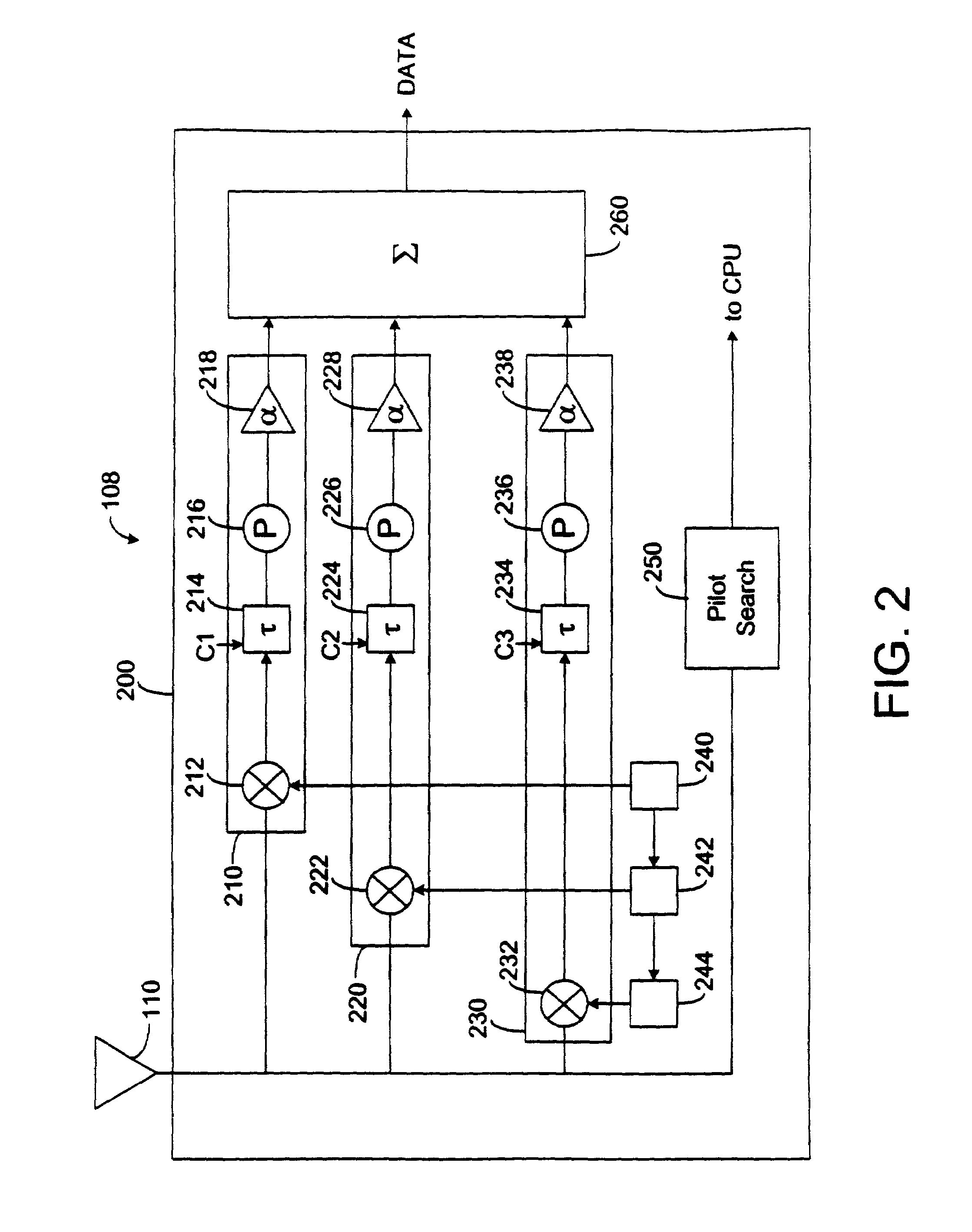Forward link time delay for distributed antenna system
a technology of forward link and antenna system, which is applied in diversity/multi-antenna system, digital transmission, polarisation/directional diversity, etc., can solve the problems of physical separation of antenna elements that can give rise to phase differences and consequent signal distortion, and difficulty for the receiver to resolve a desired signal
- Summary
- Abstract
- Description
- Claims
- Application Information
AI Technical Summary
Benefits of technology
Problems solved by technology
Method used
Image
Examples
Embodiment Construction
[0034]The present invention relates to a method and apparatus for optimizing the combined signal strength obtained using a rake receiver. In the present invention, a variable delay element is provided for rake receiver finger for the purpose of offsetting the receiving times of each signal sent and received by a rake receiver. The delay of each variable delay element is calibrated to a signal transmitted from an antenna in a CDMA distributed antenna system.
[0035]Referring to FIG. 1, an example of a wireless system is shown that is suitable for application of the present invention. In FIG. 1, an antenna system is shown that includes a first antenna 102, a second antenna 104, and a third antenna 106 that may be used for transmitting signals to a stationary receiver 108. The signals from antennae 102, 104 and 106 are transmitted across an air interface to receiver 108. A receiver 108 is used to receive the transmitted signals. The rake receiver 108 includes an antenna 110 for receiving...
PUM
 Login to View More
Login to View More Abstract
Description
Claims
Application Information
 Login to View More
Login to View More - R&D
- Intellectual Property
- Life Sciences
- Materials
- Tech Scout
- Unparalleled Data Quality
- Higher Quality Content
- 60% Fewer Hallucinations
Browse by: Latest US Patents, China's latest patents, Technical Efficacy Thesaurus, Application Domain, Technology Topic, Popular Technical Reports.
© 2025 PatSnap. All rights reserved.Legal|Privacy policy|Modern Slavery Act Transparency Statement|Sitemap|About US| Contact US: help@patsnap.com



